Exploring the Diverse Traditions, Tribes & Spiritual Heritage of Sikkim :
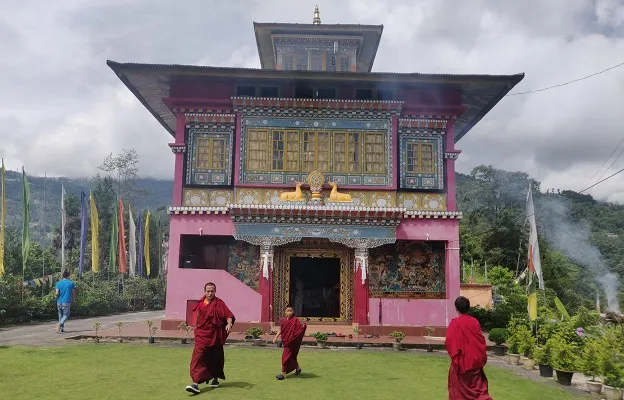
Nestled in the Eastern Himalayas, Sikkim is a living mosaic of tribes, traditions, and spiritual heritage. This small yet culturally rich Indian state is home to the Lepchas, Bhutias, and Nepalese—three communities that have coexisted in harmony for centuries. Their shared respect for nature, unique customs, and colorful festivals make Sikkim one of the most culturally fascinating destinations in the world.
The Three Pillars of Sikkim’s Cultural Identity
1. The Lepchas – Keepers of the Land
Believed to be Sikkim’s original inhabitants, the Lepchas have a deep spiritual bond with nature. They honor mountains, rivers, and forests as sacred and integrate this respect into their everyday lives. Lepcha oral traditions, folk songs, and eco-centric rituals reflect their ancient worldview.
Traveler’s Tip: Meet Lepcha elders in Dzongu Valley for stories about Mount Tendong and sacred lakes.
2. The Bhutias – Tibetan Legacy in the Hills
The Bhutias, of Tibetan origin, migrated to Sikkim in the 15th century, bringing with them Tibetan Buddhism and its vibrant traditions. Monasteries, masked Cham dances, and festivals like Losar and Saga Dawa are central to their identity. Their homes often showcase intricate woodwork, and their cuisine features hearty noodle soups, momos, and fermented beverages.
3. The Nepalese – Majority Community with Many Flavors
Migrating in the 19th century, the Nepalese brought Hindu customs, agricultural practices, and a rich food heritage. Festivals like Dasain and Tihar light up the valleys, while Nepali has become the most widely spoken language in Sikkim. Sub-groups such as the Limbu, Gurung, and Tamang communities add even more cultural diversity.
Nature and Spirituality – The Soul of Sikkimese Beliefs:
Sikkim's cultural and religious identity is profoundly shaped by the deep intertwining of nature and spirituality. The region's majestic Himalayas, sacred rivers, and lush forests are not merely physical landscapes but are revered as divine manifestations. Buddhist traditions, dominant in the state, worship Mount Khanchenjunga as a guardian deity. Similarly, indigenous Lepcha and Bhutia communities hold sacred lakes, caves, and peaks in high spiritual regard. Monasteries and stupas are integrated into the hillsides, underscoring the harmony between humans and the environment. For the Sikkimese, safeguarding nature is a spiritual obligation, reflecting a belief system that views the earth as a living, sacred entity and not merely as a resource.
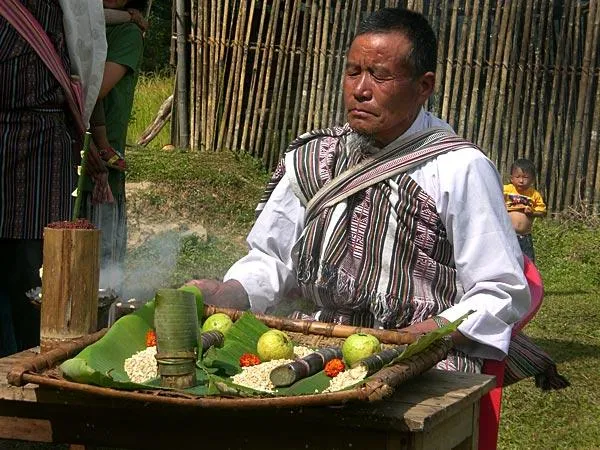
Major Festivals Celebrated in Sikkim
As a culturally rich state Sikkim celebrates a vibrant array of festivals that reflect its diverse ethnic and religious heritage. Among the most significant festivals celebrated include :
- Losar: The Tibetan New Year, observed with masked dances, elaborate feasts, and family reunions.
- Saga Dawa: A significant Buddhist festival commemorating Lord Buddha's birth, enlightenment, and nirvana, featuring processions and butter lamp offerings.
- Dashain: Celebrated by the Hindu Nepalese community, this festival symbolizes the triumph of good over evil through rituals, feasts, and tika ceremonies.
- Pang Lhabsol: Unique to Sikkim, this festival honors Mount Khangchenjunga as a guardian deity. It involves masked dances and rituals that underscore the historical bond between the Lepcha and Bhutia communities.
- Maghe Sankranti: A harvest festival, known for fairs like the Jorethang Maghe Mela.
- Tendong Lho Rum Faat: A Lepcha thanksgiving ceremony dedicated to Mount Tendong.
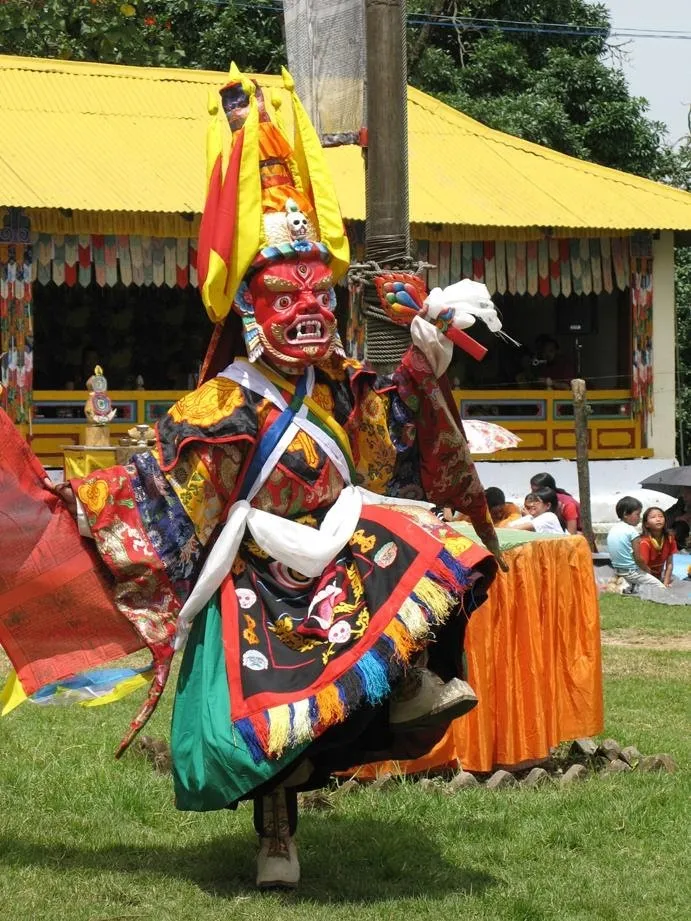
Folk Dances and Ritual Performances in Sikkim
Sikkim's cultural and spiritual vibrancy is vividly expressed through its folk dances and ritualist performances. These traditions are deeply embedded in the Lepcha, Bhutia, and Nepalese communities, often paying homage to nature, bountiful harvests, and religious tenets.
The Chaam, a masked monastic ritual observed during Buddhist festivals, narrates mythological sagas and the victory of good over evil.
Among the popular Nepali folk dances are the Maruni and the Tamang Selo, performed at weddings and festive occasions, accompanied by traditional instruments such as the damphu, madal and tungna. These artistic forms transcend mere entertainment, serving as dynamic custodians of Sikkim’s rich oral heritage and collective identity.
Sikkim’s cuisine—A Cultural Mosaic on the Plate of its multicultural essence
Sikkimese cuisine is a vibrant tapestry woven from the culinary traditions of its three major ethnic communities — the Lepchas, Bhutias, and Nepalese. Each tribe contributes unique dishes, ingredients, and cooking styles, reflecting the state’s deep-rooted multicultural heritage. The Lepcha community, known for their close relationship with nature, traditionally prepares simple yet flavorful dishes using wild herbs, bamboo shoots, and fermented vegetables. One such delicacy is sa-pen, a mild meat broth flavored with forest greens, often paired with millet-based preparations. Other dishes include Khuri, a rolled buckwheat pancake generally stuffed with yak cottage cheese and spinach, eaten with dalley chilli and tomato chutney.
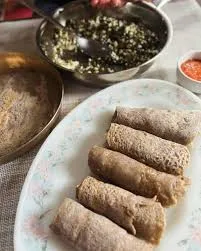
The Bhutias, of Tibetan origin, offer a more hearty and savory spread, deeply influenced by Tibetan and Buddhist monastic food traditions. Signature dishes include momo (generally made with minced beef/pork), ting mo (a bready steamed roll), Phalay ( that can be made plain or stuffed with meat mince), phagshapa—a spicy and tangy pork dish with dried chilies and radish—and gyathuk, a thick hand rolled noodle soup made with vegetables or meat. Similar dishes include thenthuk, thukpa, kauri - which are all hand hade noodle/pasta dishes. Their diet often includes chhurpi (hardened yak cheese), and zau/ Chanku (a fermented rice beer that is tick and blended with dry fruits and barley flour ) as well as Suja (salty tibetean butter tea) used in rituals and festivals.
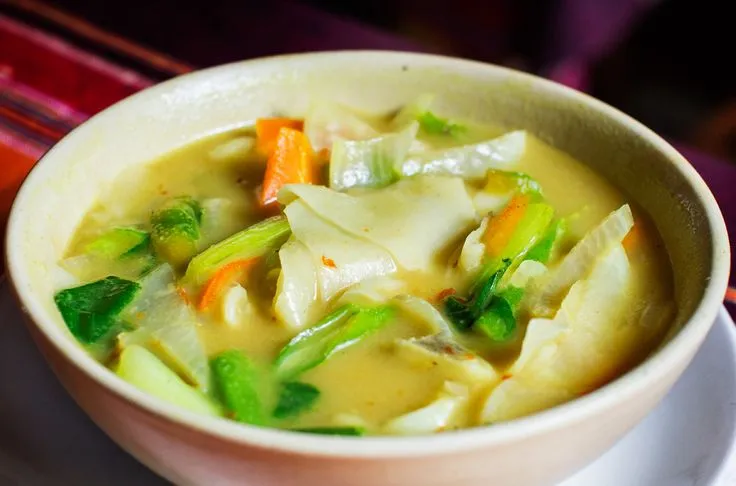
The Nepalese community, which forms the majority population in Sikkim, brings a wide array of flavors and festive foods to the table. Popular dishes include gundruk (fermented leafy greens), sinki (fermented radish taproots), and sel roti, a deep-fried rice flour bread typically prepared during Dasain and Tihar festivals. Tama ( bamboo shoot curry) and achar (spicy pickles) are common accompaniments that add depth and spice to everyday meals. Nepali cuisine can be further divided into sub tribes that have their own unique dishes. However a Thakali platter is one that visitors can go for to get a taste of Nepali cuisine where each dish tells a story of history, migration, and coexistence.
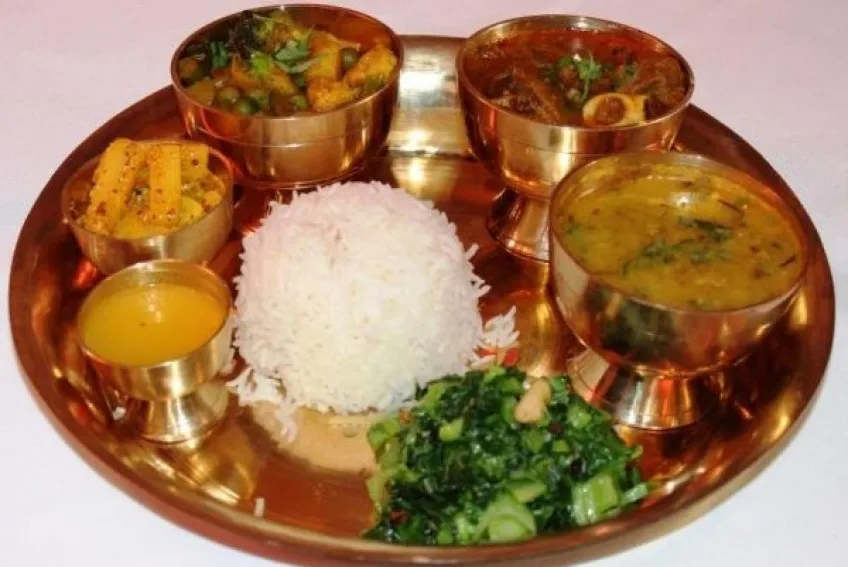
Conclusion
The rich cultural diversity of Sikkim is evident in the heterogeneous coexistence of the Lepcha, Bhutia, and Nepalese communities in harmony with each other.
Its cultural landscape has been profoundly shaped by migration and linguistic diversity. This blend of communities has created a unique multilingual environment, where migration has fostered inclusion, cultural exchange, and a deep respect for ethnic identities.
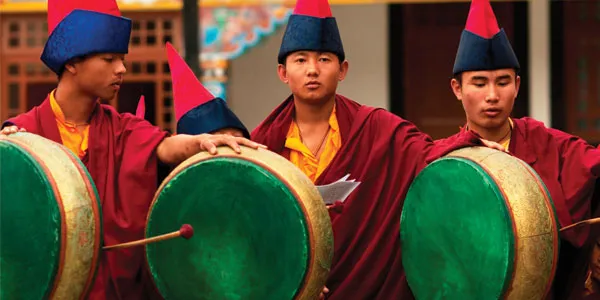
Tourists are often captivated by the warm hospitality, traditional attire, and colorful festivals. What makes Sikkim truly special is the interweaving of these cultures. It’s not uncommon to find a Buddhist monastery near a Hindu temple, with both communities celebrating each other’s festivals with equal fervor. The state government actively supports the preservation of all indigenous cultures, offering subsidies and platforms for traditional arts, crafts, and languages. As modernity grows, Sikkim continues to cherish its roots. Educational initiatives and community programs help the younger generation stay connected with their heritage while embracing global influences. This dynamic balance between tradition and change makes Sikkim not just a scenic destination, but a profound cultural experience.
We highly recommend that you stay in one of the many homestays in Sikkim to better understand the culture and people of Sikkim.
Written by Prerna
Prerna, a seasoned travel & hospitality expert, isn't just a writer – she's a curator of experiences. Leading OurGuest's operations at The Barfung Retreat, she leverages her extensive background at Taj, Hyatt, ITC, and more. A Master's graduate in English Literature, Prerna's passion for storytelling is fueled by her childhood spent traversing India with her police officer father. Fluent in Bengali, Hindi, English, and Nepali, she fosters genuine connections across cultures. Join Prerna as she unveils the hidden gems and vibrant soul of Northeast India, one captivating story at a time.
For a customized Sikkim Tour experience you can contact us at +91-7669503993 or email to contact@ourguest.in




